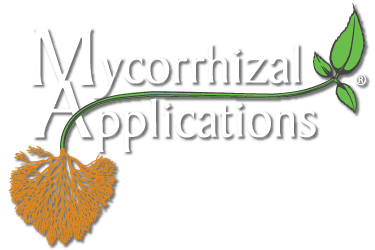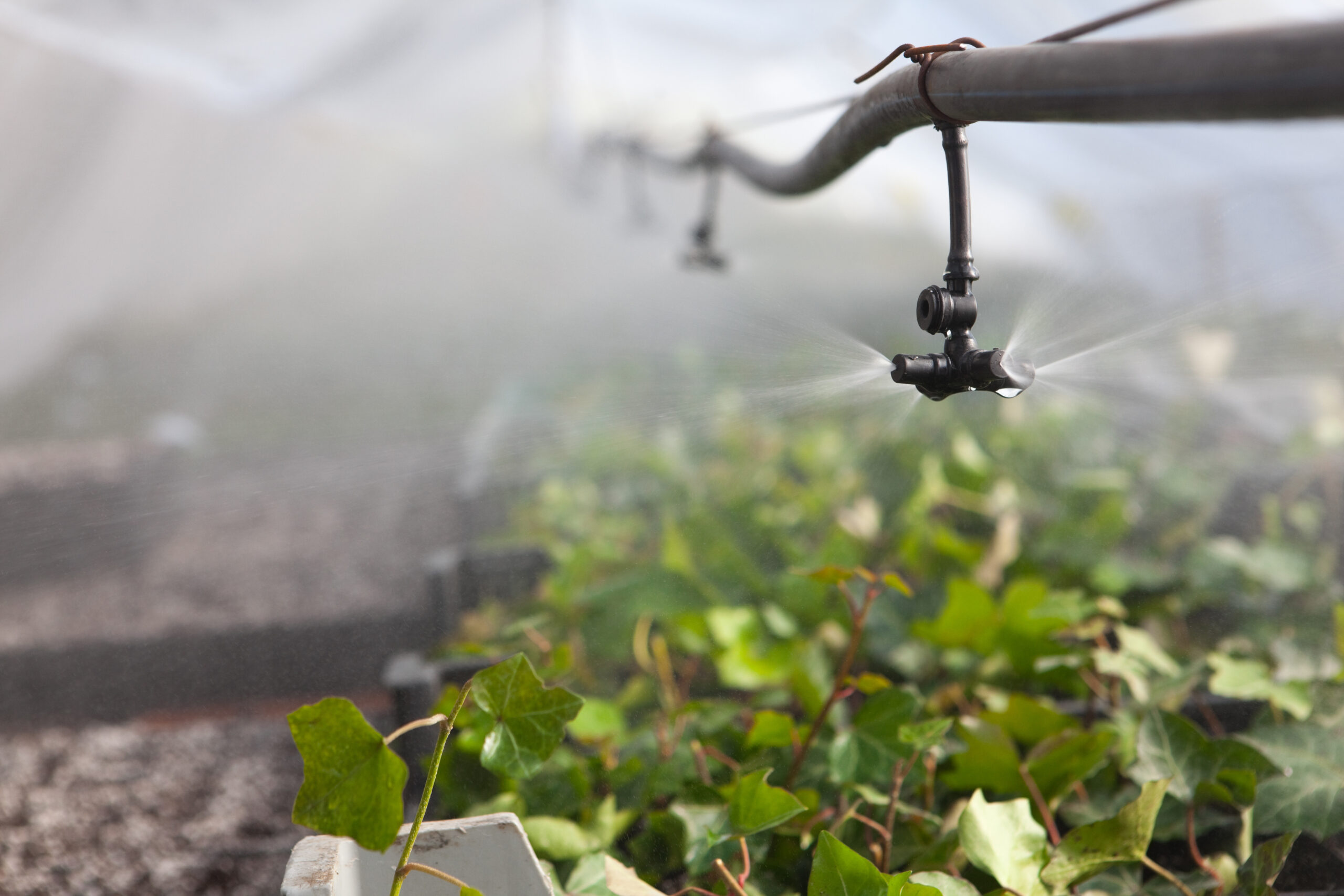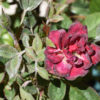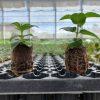Over time, our industry has come to better appreciate water. Water availability and the cost of water are now regular topics of discussion. Outdoor production now must deal with more erratic weather conditions that can impact the need for supplemental watering. Indoor and outdoor production must work to secure and maintain a consistent supply of water to cover business needs. Whether you purchase water from a local municipality or pump water from an onsite well, water is not free. The cost of water usage is real, and growers have started to use technology to reduce their water usage. This article explains how the technology of mycorrhizal fungi usage shows reduced water usage and improved water availability to the plant.
The Biological Technology
Mycorrhizae’s main function is to expand the plant’s root absorptive system (root mass). Most of the expansion of the root absorptive system is due to the development of a hyphal network that extends both beyond the current root’s area of influence but also in areas within the current root’s volumetric area that are not accessible by the roots alone. Over time, the mycorrhizae impacted root mass can expand up to 50 times the original root mass.
Just to clarify, plant roots do not necessarily increase with the use of mycorrhizae. Container growers don’t need to worry about plants becoming more “root” bound. This can mean extending up to 2 feet beyond the outer roots in a plant grown in mineral soil and more fully capturing nutrients and water within the existing root depletion zone. The increased absorptive area is hard for most of us to image unless we view a 3-D root mass image. You cannot always see the difference when you pop a plant out of a pot. The mycorrhizal hyphae are simply better than roots at water absorption.
- Water and nutrients are absorbed along the entire length of the hyphae compared with just the tip for roots and root hairs.
- Mycorrhizal hyphae allow for greater inflows of both water and nutrients through their system.
- Mycorrhizal fungal hyphae can also act as a water storage vessel during times of excess. They release the water to the plant when it is needed.
- Plants with mycorrhizal relationships develop better root absorption systems or root masses. They absorb more of the available water in the soil – ultimately benefiting the plants with a more consistent water source.
- In my experience, a gallon-sized plant treated with mycorrhizae can last 36-48 more hours before wilting.
The Cost of Water
Water usage involves both fixed and variable costs. The fixed costs can be the cost of being connected to the municipal water system or the cost of drilling and establishing a well. Variable costs can include the costs to maintain a well and pump, electricity to run the pump, and, of course, the volume per unit (cubic feet or cubic meters) consumption fee for water usage through a utility.
Whatever level of automation you have at your greenhouse, watering plants still requires labor. The cost of quality labor is increasing. Mycorrhizal fungi usage can help you reduce your labor costs while seeing reduced water usage. Since the plants capture more of the water you apply, so less labor is needed.
Many growers are not fortunate enough to source quality water from a private well and must treat the water used at their facility. Whether the treatment regime is acid or possibly a reverse osmosis (RO) system, every treated unit of water used has a cost associated with it. So, the less water you use, the lower the cost of your operation and the greater the potential for increased profits.
Water Capacity Restraints
Every growing operation is different. However, many greenhouses and nurseries have a limitation on how much they can pump from their well or water source. This can be a particular issue when it is hot, the plants quickly dry out, and you are at maximum pumping capacity. Just think, if your plants had mycorrhizae associations, they could pull from an internal water reserve to help them get over this period of no irrigation without experiencing drought stress and starting to dry down. Water capacity restraints can also occur with municipal water systems when the water line to your facility is too small to cover the water needs of your growing facility.
Water Runoff Concerns
Water runoff is an issue for all growing facilities. You do not need to have local regulations for this to be something you should monitor and manage. Most importantly, any water that goes as runoff from your facility is literally money going down the drain. It is also environmentally responsible to manage and reduce off-site water runoff. And, mycorrhizae is a great tool for growers who need to report and manage their runoff.
Soil Media Management
Mycorrhizae do not increase the water-holding capacity of the soil. You should not be concerned that a growing mix will stay wetter when plants are grown with mycorrhizal fungi. The hyphae’s job is to capture more water before gravity moves it through the soil profile.
Newer growers often error on the side of watering too much. But we know over watering is costly and can cause plant health care issues. Mycorrhizae usage is a good buffer that allows a newer grower to grow successfully with reduced water usage.
Whatever your irrigation method, mycorrhizal fungi can improve water uptake and reduce plant stress.
Reduce Plant Stress
The expanded root absorptive area with mycorrhizal-treated plants helps the plant capture more available nutrients and water. This, in turn, helps the plants to be less susceptible to both abiotic and biotic stress. Plants with less stress have better plant health. Plants with better plant health have fewer issues with insects and diseases. Mycorrhizal usage can indirectly reduce your plant health care costs.
Do it for the Customer
Plants treated with mycorrhizal fungi experience increased transplant success, which ultimately allows landscapers and gardeners to have a better experience. Just think, a customer can go away for the weekend without worrying if their hanging basket will dry out. While the customer’s goal is not usually reduced water usage, it certainly makes for a better overall experience.
Timing is Key
The most cost-effective and benefit-providing time to apply mycorrhizae is during propagation or before planting if you purchase plugs or rooted liners. This will allow you, as the grower, to maximize the benefit from mycorrhizae use.
Find More Information
You can find more information on MycoApply® Mycorrhizae by checking out our How It Works video, contacting your local Mycorrhizal Applications Representative., or visiting us in person at Cultivate’24 in Booth #3305, July 13-16 in Columbus, Ohio. We hope to see you there!
You can also call (866) 476-7800 or email us at inquiries@mycorrhizae.com.








